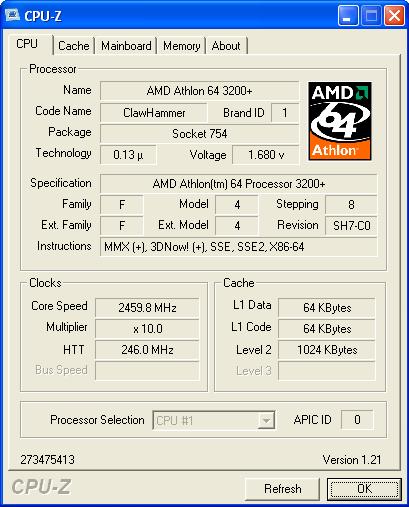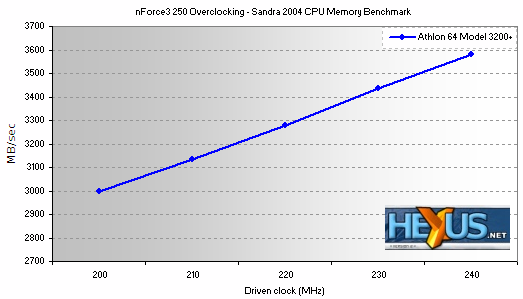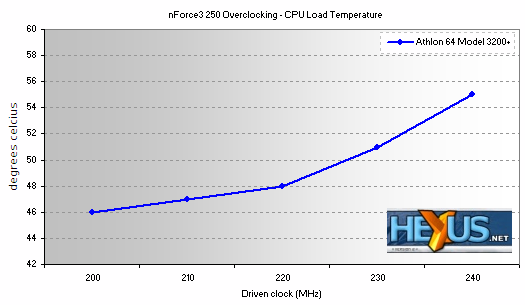Results
With the AGP and PCI bus speed safely locked we were able to have a free reign. System performance was only limited by the available Vcore.Perfect stability was achieved with good cooling right up to 227MHz Front side bus, or 2,270MHz processor speed before we needed to raise voltage levels. Increasing the Vcore to 1.6v enabled us to go just shy of 240MHz front side bus. Applying the maximum 1.7v Vcore gave stability at 240MHz, or 2,400MHz processor speed and enabled us to run some tests successfully at speeds up to 247MHz. 250MHz proved elusive, even with Freon cooling, as the processor was crying out for more voltage. As we pushed the speed of the processor we took a few simple benchmarks along the way so that we could see how the increased speed translates into system performance. Here are the results.

Our best overclock at 246MHz Front side bus was enough to run CPU-Z, and Sandra, but as Pifast failed we capped the graphs at 240MHz

This is the first time we have seen the Athlon 64 break the 10000 Dhrystone ALU score in Sandra and it's a mighty fine achievement. It is interesting to note that our setup showed a much larger increase in performance during this test between 2100MHz and 2200MHz. Thereafter the increase was constant but slightly less dramatic.

With no dual DDR to boost performance in Sandra, we were still very impressed with 3700MB/sec in this test. The graph shows that performance increases uniformly with the increased driven clock.

The Pifast tests show a slightly different picture. Here we see that performance increases are linier to the increased front side bus until we exceed 230MHz. After this point the performance starts to tail off very slightly.

This graph should not surprise anyone that overclocks their system. We can see that once we push the Athlon 64 above 220MHz driven clock, temperatures start to rocket. This is in fact mainly due to increasing voltage for the 230MHz and 240MHz tests. Even with these increases, 55°C under load is still very respectable, although we should not forget that if the temperature rises above 60°C, stability starts to suffer.
Final thoughts
While trying various Windows applications for controlling the chipset, we stumbled across the ClockGen program from the makers of CPU-Z. Since FID setting on the CPU is chipset agnostic and done on the CPU, we were able to change the CPU multiplier to values below the standard 10X, functionality not available in the BIOS.Unlike previous motherboards, where users were desperate for higher multipliers as they needed to keep the PCI bus as close to 33MHz as possible, the new chipset is able to make very good use of the lower settings.
Although we could not achieve stability using the GA-K8NS at 250MHz front side bus during our 10X testing, by reducing the CPU multiplier to 9.5X we were able to take full advantage of the maximum available bus speed to push our memory performance.










